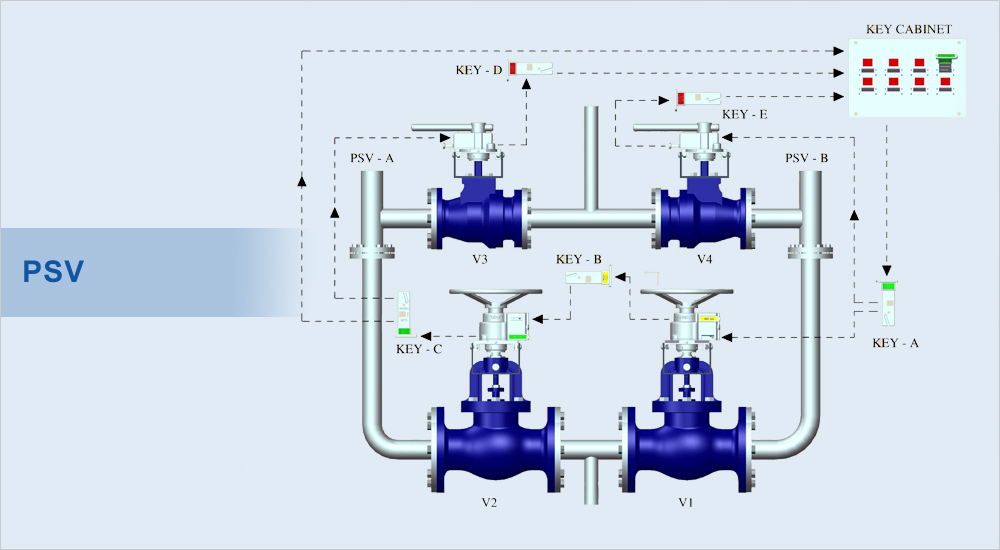
Pressure Safety Valve (PSV)
A Pressure Safety Valve (PSV) is a critical safety device designed to open and relieve excess pressure from vessels or equipment. Typically in a process loop 2 PSV’s are deployed so that during maintenance one can switch over to another. Thereby carrying out operation with utmost safety and without interrupting the process.
- Operational Importance: In many industrial settings, PSVs are periodically switched over to maintain operability. During these changeovers, it is vital to maintain an open path to relief. This allows for continuous production and prevents the need for isolating and shutting down the entire process.
- System Configuration: Pressure safety loops deploy two or more PSV’s. In order to take one PSV in maintenance / standby. It is to be ensured that one is always operating. To achieve the switching operation, a predetermined process sequence is developed where linear key coded interlocks are mounted on the isolation valves within the PSV loops. These interlocks ensure safe switching from one PSV to another.
Benefits of Valve Interlocks for PSV Systems:
Valve interlocks enforce a strict operational sequence to prevent human errors during PSV switchovers, ensuring overpressure protection is never compromised and thus significantly enhancing the reliability and safety of pressure relief operations in various industrial applications.
